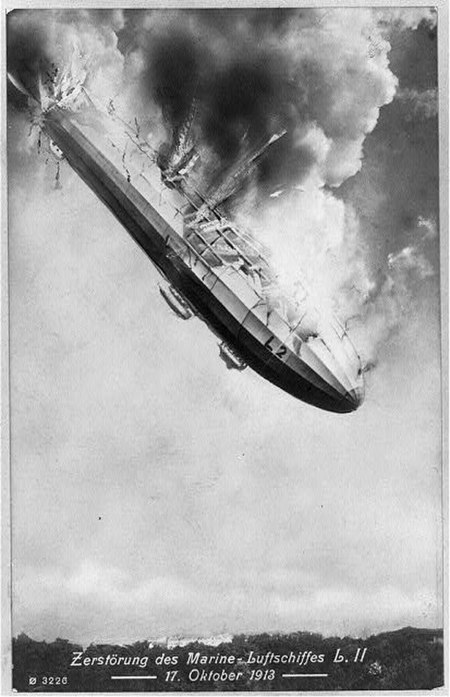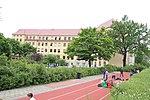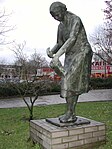Johannisthal air disaster
1910s in Berlin1913 in GermanyAccidents and incidents involving balloons and airshipsAirliner accidents and incidents involving in-flight explosionsAviation accidents and incidents in 1913 ... and 1 more
Aviation accidents and incidents in Germany

The Johannisthal air disaster was one of the first multiple-fatality air disasters in history. It involved the Imperial German Navy's L 2 airship manufactured by Luftschiffbau Zeppelin as LZ 18. Its test flight resulted in the death of all 28 passengers and crew on board. On 17 October 1913, at approximately 10:30am local time, hydrogen gas which was being vented was sucked into the forward engine and ignited causing the airship to explode and burn. It crashed near Johannisthal Air Field about 10 miles southeast of Berlin. This accident occurred a little over a month after the Helgoland Island Air Disaster.
Excerpt from the Wikipedia article Johannisthal air disaster (License: CC BY-SA 3.0, Authors, Images).Johannisthal air disaster
Karl-Ziegler-Straße, Berlin Adlershof
Geographical coordinates (GPS) Address Nearby Places Show on map
Geographical coordinates (GPS)
| Latitude | Longitude |
|---|---|
| N 52.436666666667 ° | E 13.517777777778 ° |
Address
Ehemaliges Flugfeld Johannisthal
Karl-Ziegler-Straße
12489 Berlin, Adlershof
Germany
Open on Google Maps









